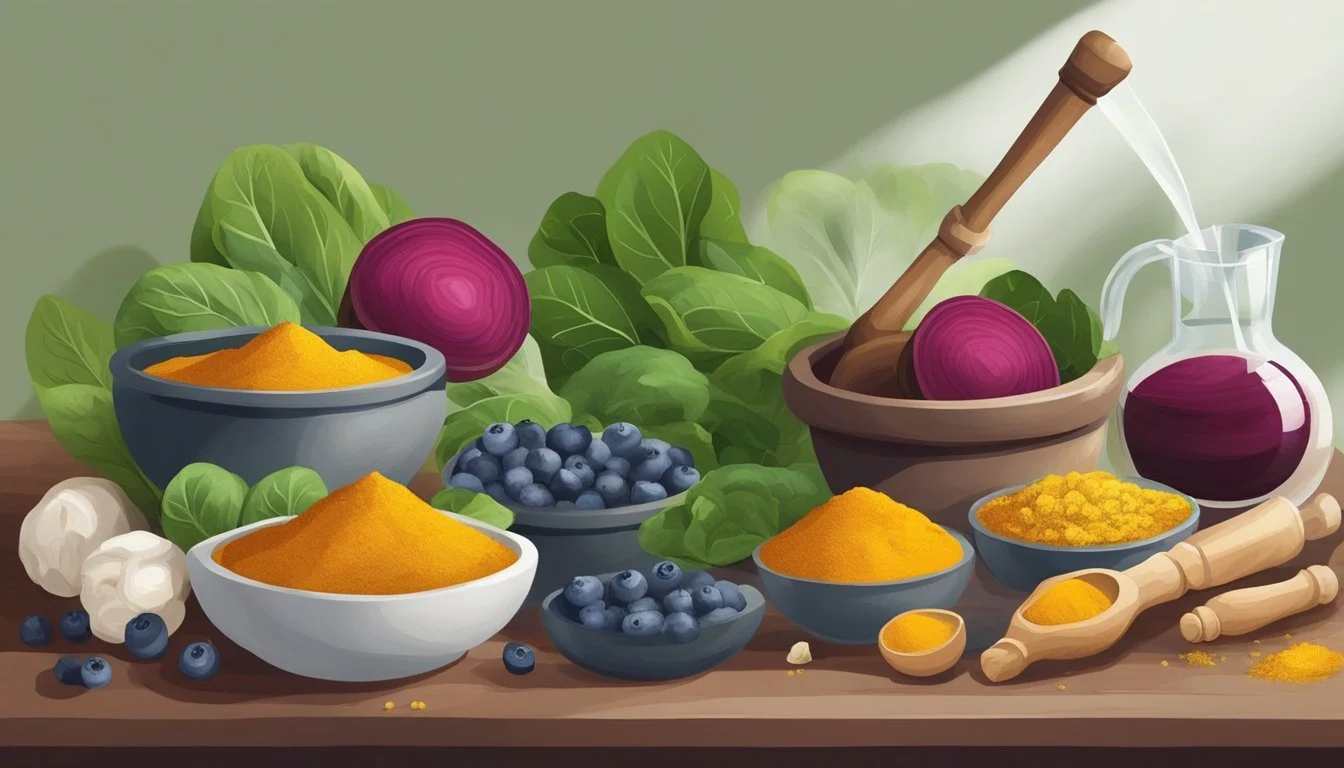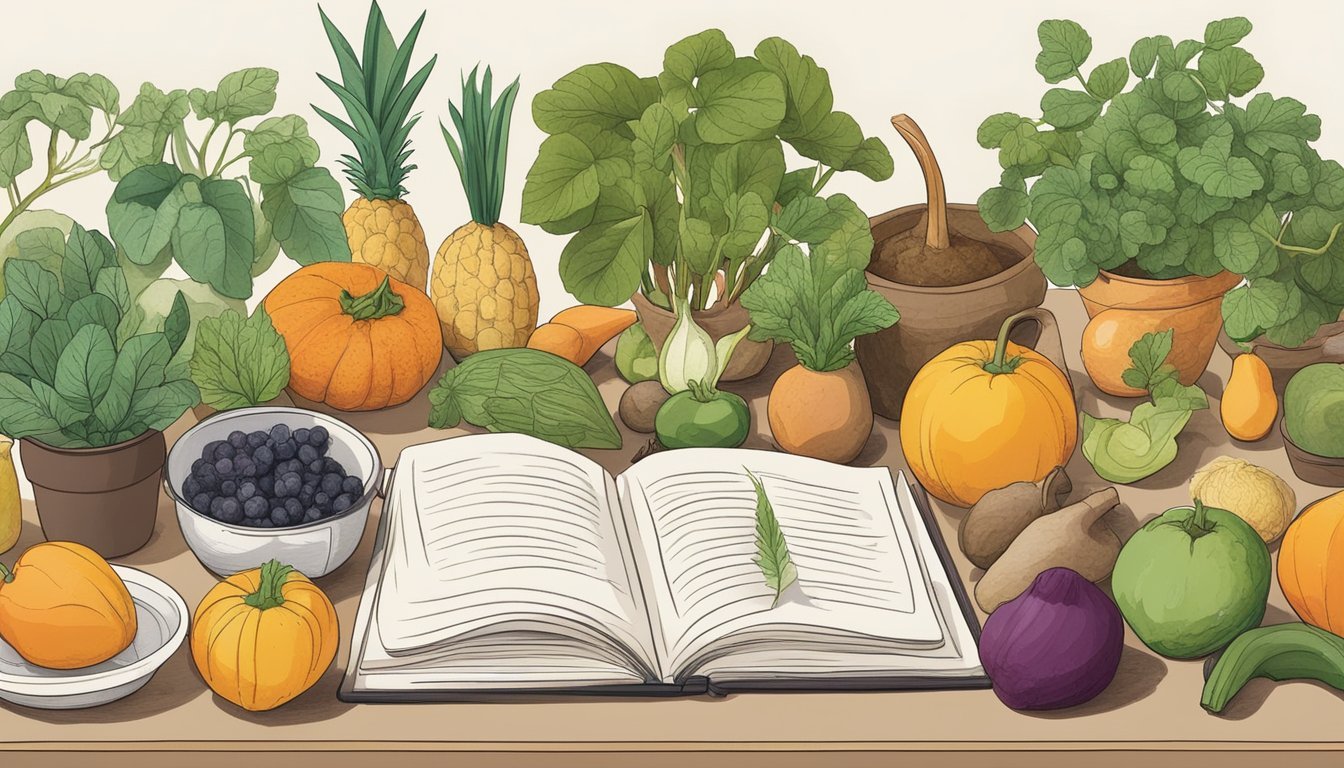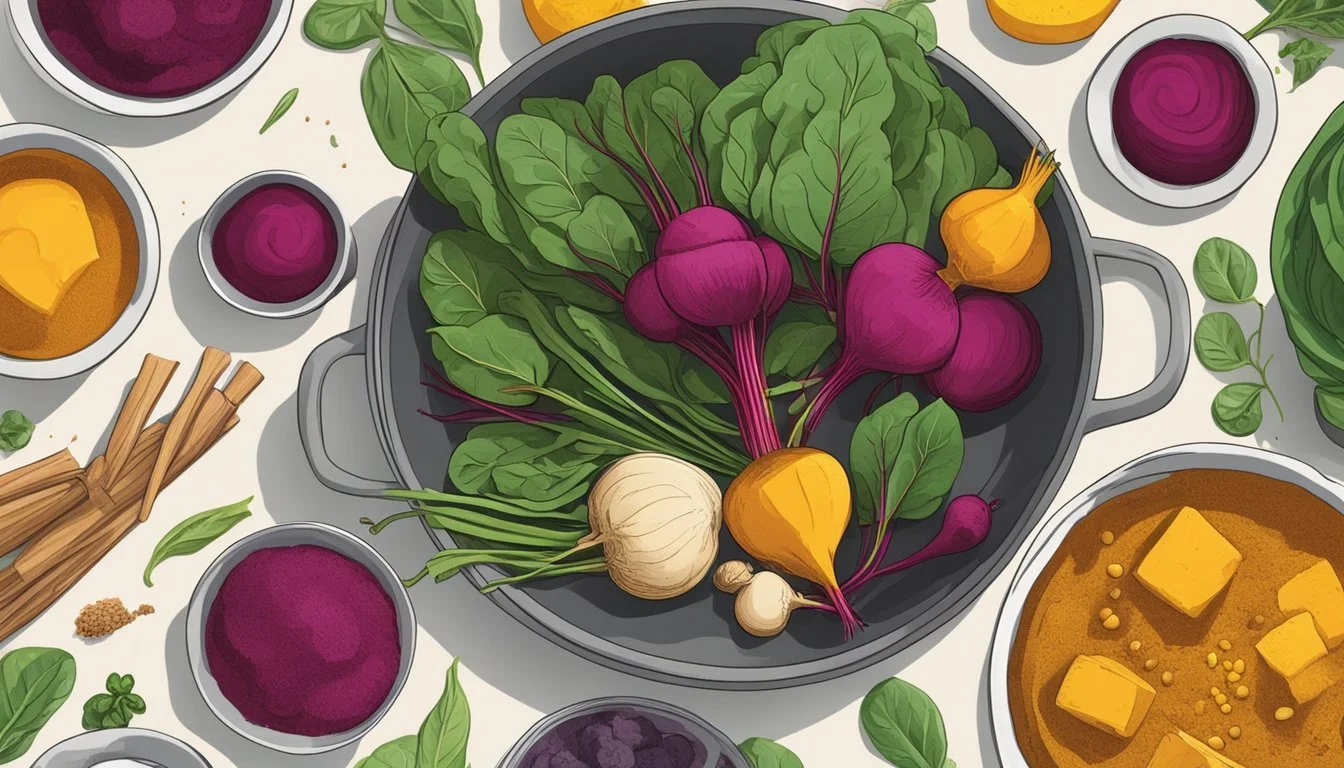How to Make Your Own Natural Food Coloring
A Step-by-Step Guide
Creating natural food coloring at home is a simple and effective way to bring vibrant hues to your dishes without the inclusion of artificial additives. As awareness about the potential health impacts of synthetic dyes grows, many people are seeking alternatives. They are turning towards DIY methods to extract colors from natural sources. These homemade food colorings can derive from a variety of fruits, vegetables, and spices, catering to a wide spectrum of colors.
The process of making natural food dyes involves simmering, blending, or dehydrating the natural ingredients to concentrate the colors. For instance, boiling red cabbage and adding a touch of baking soda can yield a bright blue, whereas simmering turmeric lends a rich yellow hue. These naturally-derived colors not only provide peace of mind for the health-conscious baker or cook; they also offer the opportunity to customize shades and intensities.
In addition to health benefits, making your own food coloring is a step towards sustainability. By using whole ingredients that are often readily available in the kitchen or easily sourced from a local market, individuals can reduce the carbon footprint associated with processed food products. With a little patience and creativity, anyone can master the art of producing homemade natural food colorings, enhancing the visual appeal of their culinary creations in a safe and environmentally friendly manner.
The Benefits of Natural Food Coloring
Natural food colorings offer distinct advantages over artificial alternatives, relating to health, the environment, and ingredient quality. They lack the synthetic chemicals found in artificial colors, some of which are derived from petroleum products.
Health Advantages
Natural food colorings can be made without the additives and preservatives that are often associated with artificial colors. Artificial colors have been scrutinized for their potential link to hyperactivity in children, while natural food dyes do not carry these same concerns. Manufacturers often create artificial colors from petroleum, which can cause alarm for some consumers when they consider the source of these substances entering their food.
Environmental Impact
The production of natural food colorings involves minimal processing, especially when individuals create them at home using eco-friendly practices. In contrast, the production of artificial colors often relies on non-renewable resources, including petroleum products. Using a food dehydrator to make vegetable powders for food colorings can be an eco-friendly option as it ensures fully utilizing the ingredients and minimizing waste.
Quality of Ingredients
Consumers who opt for natural food colorings benefit from using high-quality, whole-food ingredients with no hidden synthetics. Home-made food coloring can retain some of the nutritional benefits from its source ingredients like beets (how long do beets last?), turmeric, and saffron, providing additional value beyond color. Ingredients in natural colorings are typically recognizable and simple, which appeals to those aiming for a cleaner diet and transparent food labeling.
Preparing for Natural Dye Creation
Creating natural food coloring at home requires careful selection of color-rich fruits and vegetables and the right kitchen tools. By understanding how to combine these natural ingredients, one can produce a vibrant range of colors.
Selecting the Right Ingredients
To begin, they must choose produce known for its pigmentation properties. Brightly colored fruits and vegetables, such as beets for red or spinach for green, are ideal. For yellow hues, spices like saffron can be simmered to release color. Ingredients should be fresh and ripe to ensure the maximum extraction of color.
Equipment Required
The necessary tools for creating natural dye include a blender or food processor for pureeing raw ingredients. For heating and simmering ingredients, a saucepan is essential. Strainers and cheesecloth will aid in separating pulp from liquid dyes, and small jars or containers will be needed for storing the final product.
Understanding Color Combinations
To achieve the desired shade, they must mix primary natural colorants. Red cabbage can be simmered to create a purple color, which then can be shifted to blue with the addition of baking soda. Creating a rainbow of colors from natural sources often requires mixing different fruits, veggies, and spices in precise ratios to achieve the perfect hue.
Extracting Colors from Fruits and Vegetables
Extracting colors from fruits and vegetables requires simmering these ingredients to release their pigments, then straining to obtain the pure coloring.
Using Berries for Red and Pink Shades
Berries: To achieve red and pink shades, one can use raspberries or strawberries. These berries are simmered with a small amount of water to release their color. After simmering, the mixture is strained through a fine sieve to remove the fruit pulp, leaving behind the desired colored liquid.
Beets: Beet juice provides a deep red shade. One must chop the beets and purée them, adding a bit of water if necessary. The purée is then pushed through a sieve to extract the juice.
Deriving Yellow and Orange Hues
Turmeric: For a bold yellow color, turmeric is simmered in water for a couple of minutes. The resultant mixture is then strained to get a vibrant yellow coloring.
Carrots (how long do carrots last?): Carrot juice can give a range of yellow to orange hues. One needs to blend the carrots with water and strain the pulp out to obtain the coloring.
Obtaining Greens From Leafy Vegetables
Spinach: Spinach leaves are ideal for a natural green dye. They are boiled until the leaves' color transfers to the water, which is then strained to discard the leaves, resulting in a green-tinted liquid.
Spirulina: Although not a vegetable, spirulina powder can be dissolved in water without the need for heating to produce a green color.
Creating Blue and Purple from Cabbage
Cabbage: Red cabbage can be chopped and boiled to produce a purple dye. By altering the pH of the cabbage water with baking soda, it transitions from purple to blue.
Blueberries: (how long do blueberries last?) Blueberries can be crushed and boiled with water. Once the blueberries have released their color, the mixture is strained to separate the juice from the blueberry skins to use as a dye.
Specialty Colors and Techniques
To achieve a varied palette of natural food colors, one must explore specialty ingredients and techniques. These methods ensure that deep shades and specific hues are attainable while maintaining the color's vibrancy and longevity.
Rich Dark Tones and Special Hues
For rich dark tones like deep blues and purples, ingredients such as blueberry juice and spirulina powder can be used. Blueberry juice, when reduced, provides a concentrated color. Adding a touch of baking soda to the reduced liquid can transform it from purple to a more vivid blue while spirulina powder offers a range of blues that can be adjusted according to quantity used.
To create shades of blue:
Reduce 1 cup of blueberry juice until syrupy.
Stir in 1/4 teaspoon of baking soda for a blue hue.
For green colors:
Use a small amount of liquid chlorophyll or spirulina powder.
Blend the powder with a base liquid for an even color distribution.
Adjusting Color Intensity
The strength of the color can be controlled by adjusting the concentration of the natural ingredient. Saffron yields a bright yellow when simmered and steeped, and by reducing the liquid, one can intensify the color.
Steps to achieve a stronger yellow:
Simmer saffron in water.
Steep for 15 minutes.
Strain and reduce the liquid to desired intensity.
Longevity and Storage Methods
Proper storage methods can extend the shelf life of homemade food colorings. Colors should be stored in an airtight container in the refrigerator to maintain freshness. For instance, pomegranate juice can be frozen in ice cube trays, preserving the color and making it easier to use in smaller doses. Keep in mind that natural dyes can cause stains; therefore, they should be handled carefully.
Storage suggestions:
In the fridge: Keep the dye in an airtight container for up to 6 weeks.
As ice cubes: Freeze the dye in trays for extended shelf-life and easy use.
Incorporating Natural Colors into Recipes
Successfully integrating natural food dyes into various recipes requires understanding how their unique characteristics interact with other ingredients. Consistency, color retention, and flavor impact are pivotal when incorporating natural colors.
Natural Coloring in Baked Goods
When adding natural color to cake batter or sugar cookies, chefs need to consider the baking process. Intense heat can sometimes alter the color of natural dyes. To achieve the best results, it's recommended to use vibrant and heat-stable sources, such as beet purée for red or pink hues. A typical ratio an individual might use is about 1 to 2 teaspoons of the natural coloring for every cup of flour, ensuring colors blend well without altering the recipe's moisture balance.
Using Natural Colors in Frostings and Icings
To color frostings and icings, one can incorporate concentrated liquid dyes or powders. For buttercream frosting, a little goes a long way, and the color deepens over time. Chefs often start with a small amount, add gradually, and constantly mix to fully distribute the color. Turmeric can impart a rich yellow shade, while spirulina can offer a brilliant blue. Preparing these colors involves simmering or puréeing the natural ingredients and then reducing them to a concentrated form that will incorporate smoothly into the icing.
Challenges with Natural Food Coloring in Baking
Natural food colorings can impart subtle flavors and might not provide as intense a color as their artificial counterparts. Sometimes, adding them to recipes that include baking soda can lead to unexpected color changes due to chemical reactions. A baker must test colors in small batches to perfect the shade desired for the final product, understanding that colors may change with exposure to different elements like pH levels or heat during the baking process. The goal is to create aesthetically pleasing and delicious results that maintain the integrity of the natural ingredients.
Tips and Tricks for DIY Food Coloring
Creating your own natural food coloring can be rewarding, offering both a palette of vivid hues and a non-artificial taste that can enhance any culinary creation. The following tips and tricks are designed to help you achieve beautiful colors while maintaining the natural flavors of your ingredients.
Enhancing Flavor While Coloring
Using natural sources for food coloring allows for the additional benefit of flavor enhancement. Matcha powder, for example, not only provides a rich green color but also adds a subtle earthy taste perfect for frostings and desserts. To achieve a golden hue with a hint of sweetness, carrot juice can be gently reduced to concentrate both the color and the flavor. When seeking to create red food coloring, opt for pomegranate juice as it imparts a tangy depth that can complement a variety of dishes.
Natural Food Coloring for Decorative Purposes
For decoration where flavor is less of a priority, such as in sugarcraft or icing, the visual aspect takes precedence. To create a broad spectrum of colors, consider the following options:
Purple: Reduce blueberry juice with a touch of lemon to brighten the color.
Pink: Use a fine-mesh sieve to squeeze juice from raspberries for a delicate pink shade.
Yellow: Simmer and strain turmeric to achieve a sunny hue, perfect for vibrant icings.
Those looking to achieve a lively purple food coloring may simmer blueberries until deeply colored and then strain them for use. Spirulina can serve as a natural colorant for greens, delivering an intense hue without greatly altering the taste of decorative elements.
Avoiding Common Pitfalls
While exploring the world of homemade food colorings, keep the following cautions in mind to avoid common mistakes:
Always strain mixtures through a fine-mesh sieve to ensure a smooth texture.
Over-reducing a colorant can result in overly intense flavors or a color too dark for the desired effect.
Introducing baking soda to adjust pH levels and change color should be done sparingly to avoid any undesired flavor profiles.
Comparing Homemade and Store-Bought Natural Colors
When considering natural food colorings, consumers often weigh the pros and cons of homemade versus store-bought options.
Store-Bought Natural Food Coloring:
Variety: Often comes in both liquid and powdered forms, offering a versatile palette for different culinary applications.
Shelf Life: They typically have a longer shelf life due to added preservatives.
Convenience: Pre-made and ready to use, they save time for busy chefs and home cooks.
Consistency: Each bottle or packet provides a consistent hue, which is crucial for repeatable results.
Homemade Food Coloring:
Customization: Allows for the creation of unique shades by adjusting ingredient ratios.
Purity: Free of additives, those who make their own ensure a fully natural composition.
Freshness: Utilizing ingredients like beets for beet powder or carrots for carrot powder, the resulting colors are derived from fresh sources.
Flavor: Can subtly influence the taste profile of a dish, adding an additional layer of complexity.
Aspect Homemade Natural Colors Store-Bought Natural Colors Ingredients Fresh, immediately sourced, no additives. May contain natural preservatives for stability. Preparation Time Requires time to prepare. Ready to use immediately. Consistency Can vary from batch to batch. Uniform and reliable across batches. Storage Shorter shelf life; refrigeration needed. Longer shelf life; often stable at room temperature. Flavor Impact Can subtly enhance flavor. Generally designed to be flavor neutral. Ease of Use Requires some culinary skill. Convenient for all skill levels.
In comparing the two, it's clear that while homemade food colorings offer a pure, personal touch to cooking and baking, store-bought options are valued for their convenience and consistency. Whether a cook chooses to go the homemade route with beet or carrot powder or opts for the pre-packaged variety, each choice provides its own set of benefits suited to different needs and preferences.





